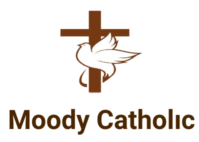The Role of Women in the Catholic Church
The Catholic Church, with its centuries-old traditions, has seen the role of women evolve over time. From the shadows of history to the forefront of church communities, the contributions of women have been undeniable, yet often understated.
Here, we explore the journey of women within the Catholic Church, acknowledging the past, understanding the present and envisioning the future.
This blog post contains affiliate links. When you click on a link on this page and make a purchase I may earn a small commission, at no additional cost to you. Thank you for your support.
Historical Perspectives
In the early Christian communities, women played a significant role. Historical texts reference female prophets and leaders like Phoebe, a deacon mentioned in the Epistle to the Romans.
During the medieval period, women found a voice through mysticism and monastic life. Saints such as Hildegard of Bingen and Catherine of Siena were influential figures, with visions and theological writings that resonated beyond convent walls.
The Present State
In contemporary times, the role of women in the Catholic Church has expanded, albeit contentiously. Women now take up meaningful roles in church administration, education, and healthcare. They serve as theologians, canon lawyers, pastoral associates, and religious education directors.
Despite this, the priesthood and episcopate remain exclusively male vocations, a point of contention for those advocating for gender equality in religious leadership.
The Vatican has made some strides, albeit gradual. The appointment of women to positions within the Vatican bureaucracy, though limited, indicates a semblance of progress. Pope Francis’s papacy, in particular, has seen an increased call for a more significant presence of women in church decision-making roles.
The Future Prospects
The future role of women in the Catholic Church hinges on doctrine, cultural shifts, and the ongoing theological debate. One area of potential growth is in the deaconate. The reinstatement of the female diaconate—an office with historical precedent—is a matter of intense debate.
The discussion encapsulates broader issues surrounding the ordination of women and their place within the ecclesiastical hierarchy.
As global conversations on women’s rights and equality gain traction, the church’s stance on women’s roles continues to come under scrutiny. There is hope among advocates that the Church will move toward a more inclusive future that recognizes the spiritual gifts of both men and women equally.
Conclusion
Women within the Catholic Church have traversed a path from the peripheries to active participation in the faith community. Their unwavering faith and service continue to be pivotal in nurturing the spiritual life of the Church.
The discussion for equality remains complex, nested in theology and tradition, but the voice of women endures, echoing the need for a Church that reflects the inclusivity and love at the heart of the Christian message.
Both honoring and challenging tradition, women in the Catholic Church stand at a crossroad, embodying the past’s legacy, contributing to the present’s vibrancy, and shaping the future’s hope. With resilience and fervor, the dialogue progresses, looking forward to a time when the Church fully embraces the gifts that women bring to the ecclesial community.
